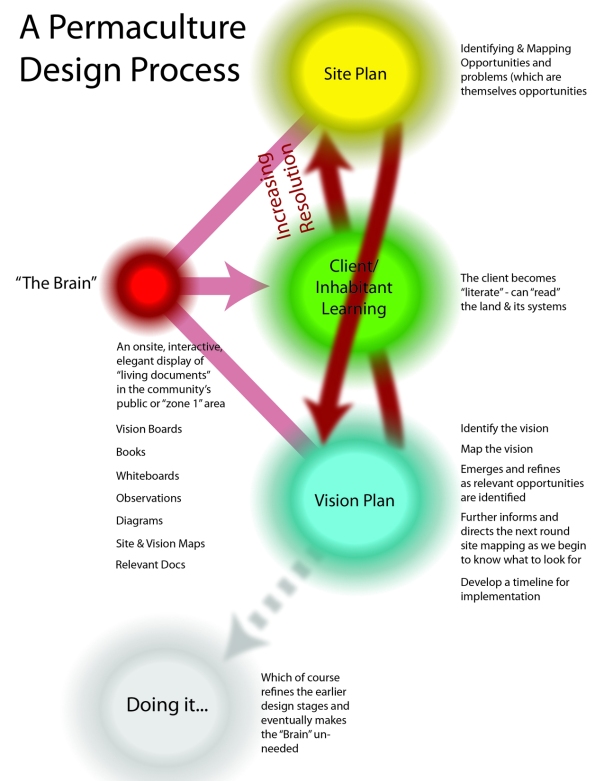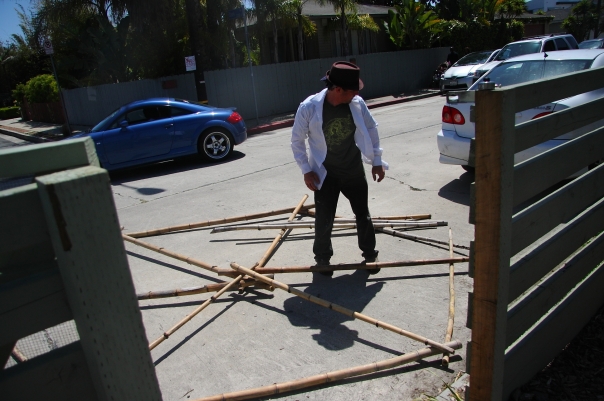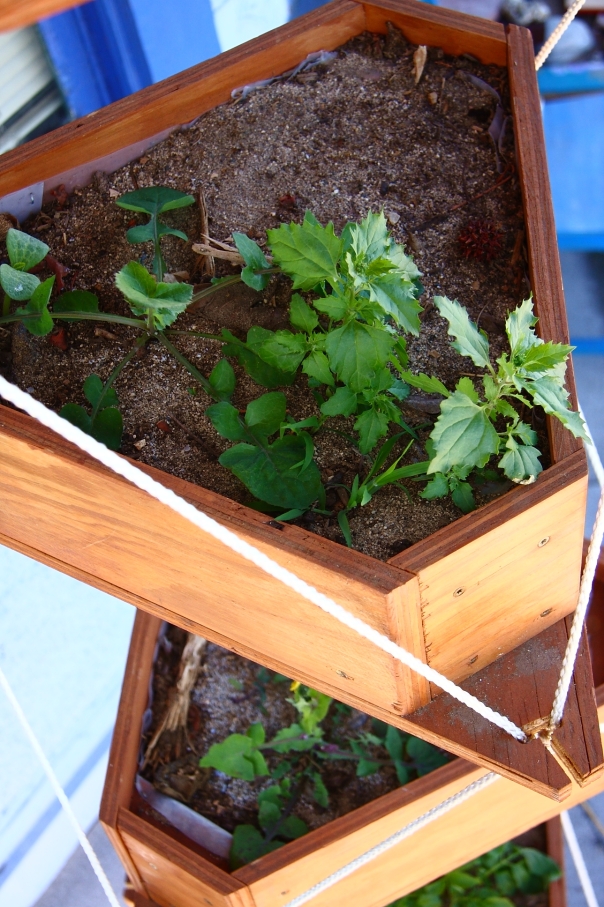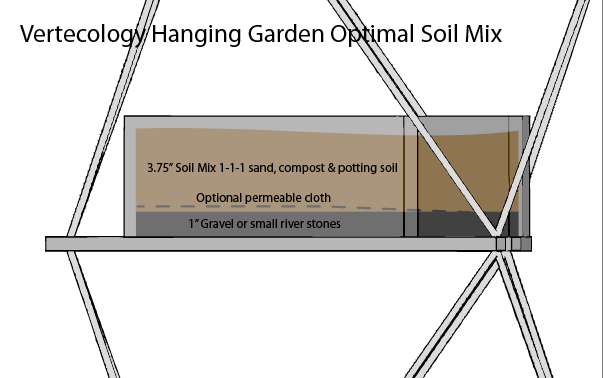Vertecology’s Dead, Long Live Vertecology!
Well this post is a message to all my followers: a new age is dawning over here. As visioned over one year ago, Vertecology has moved to a WordPress.ORG installation. This is great news. while the site looks much the same for the moment, there are big plans that can finally begin to see the light of day. This is my formal invitation to you as a loyal follower. Please go to http://www.vertecology.com and click the “follow” button at the bottom right corner of your screen to continue recieving posts and updates. The wordpress.COM install that we’ve been running has been delinked from Vertecology.com and will be closed down shortly. May we do great things together in the days, weeks, months and years ahead and thanks for all your support!
Vertecology’s Gone to the Bees!
Okay so it’s official. In between rocking out the Hanging Gardens and the rest of the goodies, Vertecology LLC has gone to the bees. Specifically, mason bees, little critters that are about 100 times as effective as honey-bees at pollination and without the sting or the susceptibility to the dread Colony Collapse Disorder. In layman’s terms this means that mason bees, 140 species of which are native to North America (there are about 300 species worldwide, mainly in the Northern Hemsiphere) are so easy to “keep” that even kids can do it and don’t need special training or clothes, and it also means that the fruit apocalypse predicted by doomsayers with the attendant collapse of the bees doesn’t have to happen.
In fact honeybee populations are in trouble, but if enough of us get mason bees augmenting them in the garden, we can still enjoy peaches, plums, apples and apricots and lots of other stuff for a million seasons to come. And when the honeybees do make a comeback, which they certainly will as queens adapt to the new ecological reality, their sharing of the turf with the native, solitary mason bees will not hurt anyone, in fact, will allow for an even more robust ecology.
The idea of offering a number of habitat designs came with a fun and lively bug in my ear by the name of Laura “Bee” Ferguson, principal of Bee Haven International, and we’re both working closely with Pacific Domes International of Ashland, Oregon. While I haven’t got the much hoped for day job with the folks at Pacific just yet we are now excited to be working together on this venture.
In anticipation of the page launch I put up a number of the habitats for sale at the first annual Autumn Ashland Maker’s Market put on by the Southern Oregon Crafters’ Collective, sold a few and got a lot of interest.
So now it’s time to let the secret out, the page is up… click here or just go to the “Mason Bee Habitat” link at the top of this site. There’s a much richer bit of info up there, and it’s going to fill in more in the coming days and weeks, as will the product and build-it-yourself options. On a business front this is exciting too, as it creates an additional layer of very affordable, participatory, permaculture-oriented Vertecology products that will move very quickly and provides the opportunity to prototype and test out business models formerly reserved only for the big installs a lot more easily. Here in fact is the current business plan & financials, if you’re so inclined, thanks to SCORE on this one.
 If you’ve got a garden in the zones where mason bees thrive (check the spread on the Mason Bee Page) or know someone who does, make a purchase if you can either from the sidebar on the right side of the Mason Bee page or directly from the Etsy shop… it will support Vertecology, the ecology at large and bring you a lot more yummy fruits and veggies next spring. And do keep checking back as I’m about to get crazy on the design side of things.
If you’ve got a garden in the zones where mason bees thrive (check the spread on the Mason Bee Page) or know someone who does, make a purchase if you can either from the sidebar on the right side of the Mason Bee page or directly from the Etsy shop… it will support Vertecology, the ecology at large and bring you a lot more yummy fruits and veggies next spring. And do keep checking back as I’m about to get crazy on the design side of things.
Thanks again and enjoy!
Strikng a Pose at PranaFest
A few weeks ago I was out at the Ashland Food Coop doing the political campaign work I’ve been doing to make ends meet while continuing work on Vertecology’s evil plan to take over the world with edible vines and up walked Janet Marley of Bahkti Fest fame. The net result of our conversation can be seen in the photos below…
Oregon’s got a set of Hanging Gardens, a lovely pair that made an appearance at the first annual and very successful PranaFest at Ashland’s Jackson Wellsprings a couple of weeks ago. While a few hundred of us did our yoga poses under the guidance of a dozen or so of some of the best yoga instructors around, these twins struck a pose on stage and got star treatment all around. Thanks again to Janet for producing this great event, festival producers are like rock stars in my world; thanks to all the rest who made it happen behind the scenes and thanks to the thousand people who came out to play.
And stay tuned… there is method to my madness and Vertecology is going to the bees! That will make sense in a very short while, I promise!
A Living Design for Doing Living Design
At the risk of being called a nerd (and I screwed the pooch on that one 25 years ago) here’s some sideways sharing that comes as the result of the proposal I’m making on Vertecology LLC’s (yes, it’s an LLC!) first large scale permaculture design for an eight acre community to be, just south of Ashland Oregon.
In the act of preparing the bid for the client, which ostensibly would price out a site plan and a relatively fixed final landscape design which would then be carved into an unwilling earth, not because the client demands it but because we don’t even have the language or the software for doing otherwise, I realized said Standard Way of Going About It that I learned in Architecture School is entirely insufficient.
Permaculture after all is about working with living systems, adapting flows midstream, integrating far more than the topography of dirt and the arrangement of neat rows of pretty flowers and pretty houses. We are guiding living systems with an intelligence all their own and being guided in kind by endless feedback loops that yield vision as much as they yield blackberries and soils and unpredictable opportunities and muscles as you roll that wheelbarrow out one more time. Yes, sometimes this tree just gets moved over there. But sometimes you introduce chickens to control the flies. Sometimes you replace the septic with composting toilets and the resultant soil changes the pH where you drop it, sometimes the recommendations are tiny but with huge impacts, and at the end of the day, discovering an opportunity here and taking advantage of it changes the balance over there.
How can a simple, complicated as $!*& CAD drawing, which I can do quite easily and well with my years of training reflect all of that, reflect human, plant, animal, mechanical and invisible factors? CAD is after all, as static as it is precise and it makes our heads more static as we layer our drawings with ever deeper precision and detail. How can CAD bend to reflect seasons and systems theory, succession of evolution and changes that come about on the land as we interlope and guide our systems to optimum? How can we describe the relevant opportunities on the land without involving and locking ourselves into a thousand layers and a thousand hours of ever expanding irrelevant detail? How can CAD describe a river, an unfolding?
Thus in the process I have come to realize that a wider view must be taken. CAD is a part of the solution, but so is an elegant and interactive display where client and designer alike can track ideas, visions and observations. So are books, whiteboards, a growing capacity in the client to read the land, mission statements and meditation in the various microclimates of the place. Perhaps the site map can begin and end with construction paper and crayons… Observing, visioning and implementing blend and blur and cycle back into one another with ever increasing resolution and clarity and ecosystems and income systems take and change shape. Ah, The Brain shall live in the Barn and work while I’m away.
Here’s version 1.0 of the design process diagram… one that may just live on Vertecology for quite some time.
Succession of Evolution and Oregon, a Land of Seasons
Hello once again beautiful world.
It is as always an end, and a new beginning. As I mentioned in the last post I am dealing what seem to be growing pains. I’ll paint a metaphor appropriate to my residence for the next two months: a seven acre parcel of gambel oak forest and grassland in the countryside a couple miles north of Central Point, Oregon.

Land Observation Photos Clockwise from Top Left: 1) A look west and slightly northward from the house, showing the bird feeders and the westward view. The gambel oaks thin out into grassland and ranchland in the valley below. 2) A towering gambel oak at the end of our driveway. A westward look from the house, showing the thinning wood and grassland below. 3) An eastward look up the lightly wooded hill behind the house. Gambel oaks dominate. 4) The gambel oaks lose their leaves, dropping a cushion of mulch as much as 6 inches deep, keeping the soil moist and cool even on hot days. 5) A northward look from the house, showing the hill slope. The rebar in the foreground contains the former veggie garden and a chickenwire fence that kept out the deer. 6) The drive and the house, a mobile home, a bit run down but quite cozy, sitting on the eastern slope and getting the moring sun.
There is a permaculture principle that goes something like “Accelerate the natural evolutionary succession of the ecosystem you are building.”
The essence of the idea is to use your own as well as general observations of the succession of species mixtures that naturally occurs in the wild to fast-track your ecosystem to its climax and maximum diversity and yield.
In natural succession, one species mixture creates the conditions necessary for the next. For example, pioneer plants like grasses may arrive by wind in barren and damaged lands, fix nitrogen, loosen compacted soils, reduce salts or stabilize steep slopes and thus create a more favorable environment for low shrubs.
These in turn create in turn a more favorable environment for small trees, all the while attracting animals, insects and birds and the seeds and pollen they bring from other places. The small trees will hold moisture, contribute to the formation of clouds, keep the soil moist under all the leaves they drop and make it ripe for mycelial networks that will in time drive the emergent forest to new heights and new heights of fertility.
While on the land here, I am largely working the day job that brought me here, working on building the “infrastructure” that will enable Vertecology to function as a “real business” that embraces both the permaculture principles and the tactics necessary for function in and eventually transformation of the current economic system, and of course getting a bit of exploration in too.
While that isn’t leaving much time, it is leaving me enough time to do some observation on the land, and even the hour or so I am able to devote daily is proving incredibly fruitful. I am able to glean much already about the history and possible futures of this beautiful landscape, and spot opportunities to accelerate the ecosystem to its climax.
Here are a couple of videos.
And strictly for the hardcore, an online mind-map of my observations of the land and its opportunities for ecological acceleration:
The notion of succession of evolution can be applied just as easily in the business and spiritual realms, and in such places it hints at the very zen notion of “letting go,” so easy once its done and so hard until it’s been done. As a twentysomething soaring visionary, the idea of letting go to me was synonymous with killing, destroying, leaving something I loved by the side of the road. And so I held on until I pretty much destroyed whatever it was I was holding on to.
Now with a little more wisdom under my belt and a growing ability to trust the intelligence of life/universe/unfolding whatever you call it, I’m just beginning to entertain the radical idea that letting go is actually more of a move in a dance that you repeat and repeat. When you pick your foot up off the floor you are in a way letting go. And letting go, and letting go, and letting go, and at some point you realize you’re delivering a staggering performance, telling a story, building a legacy and have only an instant to notice before its time to move again.
In ecosystem building, it could be said that holding on is the equivalent of mowing the lawn week after week, making sure that grass stays perfectly green with no patches and nary a dandelion, making sure the sprinklers work through the summer no matter how hot it is, and yelling at the neighbors to make sure their dogs don’t poop on the lawn. Yes, you have a beautiful lawn, dear sir, but it is ecologically dead, dead to opportunity and a drain on all around it including you.
And by contrast, it could be said that letting go is letting the weeds, shrubs and mushrooms in. Even dog poop is a nutrient reservoir. You let the grass go so everything else can come in. And you may find that at the end of it, on the floor of your towering forest, you still have some patches of very fertile grass that ask nothing of you at all and play a vital role.
Such it is with the towering forest Vertecology wishes to become in days to come. I pioneered the realm with this blog, telling of some early projects and explorations; if the blog is the pioneer species, then what are the shrubs and the trees? A year ago, I had only ideas. Now…
- The patent pending Hanging Gardens and the fundraise to complete the prototyping process , develop market ready product and finance further experiments and initiatives.
- Water Harvesting Systems and educational media about how to build them.
- Maximizing the opportunity that two months on the Central Point Land offers to make myself a far more capable permaculturist, designer, consultant, writer and educator
- Further development of festival concept structures which began with the Geo and integration of these into the greater permaculture driven vision
- Other educational media around economics and permaculture
- And more ambitious initiatives to come
With some of this coming to fruition and demanding time to develop further, and with more of it now becoming feasible with greater financial, spiritual and social capital coming into my realm and greater experience and skill in my hands, I am seeing that focus of Vertecology itself crying to change. It’s not about the grass anymore; it’s now about the shrubs and trees. I’m not shutting down the blog, but I am seeing that its role is destabilizing as an ecosystem emerges around it.
For a time the blog may become a little more erratic. For now I don’t know exactly if that means more or less blogging, or a new form taken; I’m just giving myself permission to be erratic and unpredictable so that a new rhythm can take shape. I would have in the past called this a death and would have been deathly afraid. Now I am seeing that it is only the natural succession of evolution. It is in fact, a birth.
I have thus far been trying to update the blog weekly, and have been struggling to do that the last couple of months, and couldn’t let myself see why as the last of my fear has held on. Now it is clear and in fact has been clear for some time. It is because for now, in this stage of the emergence of Vertecology, I need the time and energy to build the rest of the ecosystem.
It’s time to begin upgrading the web site, creating videos for the upcoming fundraise, finalizing prototype designs for the Hanging Gardens, and half a million other tasks, hiring out when I can’t do them myself and doing the research regarding even how to that in a way that will best serve the vision.
And of course I will keep you all posted in whatever form is most appropriate. Here’s to the next stage of evolution!
Thanks!
Building for a Million Years of Bounty: The Yin Before the Yang
Hello beautiful world,
Wow it’s been quiet on the blog scene for a bit… I’ve been gearing up with Vertecology for some time, laying the foundation for what looks to be an expansion. There’s talk of a Kickstarter fundraise, hints from peeps around town that orders for Hanging Gardens may be on the wings, some money for R&D to come from other work I will be doing in Oregon over May and June, an ad for a marketing intern soon to go live. And yet in the process of gearing up, of expansion, sometimes there is quiet gestation.
I’ve been thinking about this blog entry in some dark room of my mind for some time. What to say? Well, am I going to bring out the horns and declare with 10 white horses coming down the cobbled path that (wah, wah, wah!) I have a provisional patent on the Hanging Garden? Yes that is true as of about 48 hours ago, and I am thankful to all those who believed in me and helped me with emotional and even a bit of financial support to get the vision of what Vertecology can be to this milestone.
But there is a deeper story, and to that I wish to speak. Because in the permaculture sensibility, its not about the straight line to the destination, but about the system, the garden, that was built over time that allows the destination to be at last grasped and quietly reached and owned, that allows the bounty found at the destination to be both harvested and sustained.
That is the deeper story. I’ve been a bit quiet on the blogging front because even though I’ve been spending long hours at work on building Vertecology, R&D, developing proposals, as well as on building my financial resources by other means for the long road ahead and putting a little time on some very interesting projects by other people in this field, I’ve also been looking closely at the spiritual underpinnings to why I started this venture at all.
Knowing this is not my first attempt at entrepreneurship, and knowing that I have always in the past gotten results I didn’t expect with no idea why with all my dogged effort, I have learned at my wise young age that the quality of the fruit and flowers in your garden are just a reflection of the quality of the soil.
So it’s not about the flowers as much as it is about the soil. I care too much about this garden… about what Vertecology can become and what I can offer through it to ignore the soil this time, and though the payoff is making itself known slowly and steadily, I am beginning to recognize what it means with a faith I have never experienced before.
The slow building of soil is why I’ve gotten to the point of having something to patent at all. Building soil can’t be rushed, it can’t be forced. Try and force it and you get half the Midwest ripe for the next dust bowl. Let it run at its proper pace and you may get a bit impatient yes, but you also have a shot at a million years of bounty so vast it’s impossible to keep secret.
Confronting the need to build at the soil’s pace and not at that of my frantic and ever twirling mind has not been easy. My ever twirling mind fantasizes that Vertecology will “explode” at the first signpost and has promised to remain the irrational taskmaster it has been in the past. I’ve been down that road before and it wasn’t pretty, for me or for what I was trying to create. But attending to the spiritual soil of late has meant that the taskmaster has begun to let go his whip, and to let be. To allow things to grow at their proper pace and grow well. As a result of my inner work of late I no longer have to justify my existence to anyone, and that is the kind of soil to begin expansion with.
And once I noticed that it was never really about “exploding” I began to recognize that I have already, despite myself, been attempting to execute a real business plan with a little higher resolution than simply exploding. Though it has yet to be written on paper, just knowing that that business plan is being spoken by that quiet voice that comes when you are very still has given me enough pause to stop and listen, and on more and more frequent occasion, to act upon its recommendations.
I don’t “need” Vertecology to be anything. And in the silence, I begin to hear the music of its promise, calling me to joyous action, day by day. I begin to see the real road and how to drive upon it, when to floor it, and when to brake. It’s not that I’m stopping; it’s that for what seems like the first time, I am starting.
So in anticipation and yet in keeping with the true timing of things, I will leave you all with this: part of the business plan behind Vertecology, part of the functioning ecosystem it will become is a continuum of raw ideas being prototyped to fruition. I am truly happiest when I am creating with reckless abandon, without a care in the world and sharing the creating through my writing and media. Sort of like a 10 year old… “look ma, what I just made!” Except I’m now 38, have an idea of what it means to be a “crewman on Spaceship Earth” and know my way around design science, the permaculture principles, CNC milling machines, timelapse photography, dramatic prose, videography, social networking and some of the baddest creative software around. I know I’m in the flow when I’m so excited I just cut my finger and don’t care, “First blood!” and just keep on going.
The rest of it is support. So for now I have to play the entrepreneur, to handle the numbers, to make the calls, work out the marketing strategy, meet with potential investors, get the site organized for taking orders. But that’s all just the support, a setup so that ideally, I can keep creating, prototyping and testing ideas, enjoying the enjoying of those who just got served, make a lasting difference for the planet and feed myself in the process.
And so yesterday, in the midst of preparing for Oregon, writing a posting for a student intern, looking at the finances and getting the provisional patent filed, I rolled out to the Westside and met up with Norma Bonilla at the Venice Community Garden to harvest some bamboo poles. And I realized as I broke out the Japanese pull-saw, what I was actually building.
I realized halfway through harvesting, what I’m building with these poles and why against all logic and with all the sobriety and sanity of an Old Testament prophet I’ll be packing them all the way to Oregon.
Long before ever dreaming up the word Vertecology and doing the dot-com search, long before SCI-Arc was an intriguing name I heard on the lips of an old girlfriend years ago, I read somewhere about the floating islands built by the Aztecs which became the ground upon which Tenochtitlan and later Mexico City were built. The vision has stayed with me, and as I learned about permaculture, I realized that such madness might be worth pursuing. Realized that one could build floating islands on bamboo skeletons and local materials to reclaim wetlands from sea level rise and build edible coastlines, geometric wildlands and engines of turbocharged biodiversity and oxygen production. The process would be entirely organic (except maybe a few well placed LEDs, hint, hint), naturally paced and the artistry of it all could be truly stunning. And the bamboo for the skeletons of course could be grown right there on site, harvested, over and over and over, forever while it makes great shade for birds and cleans the tidal waters too.
In that twirling mind, it all seemed so far away, but as I harvested the bamboo, which will probably have grown back by the time I get back from Oregon, I realized a test could set up in a matter of days, in fact, in about 3 hours, I had a lot to show.
Then I went back to the pad and started prepping to write the budget for the Hanging Garden Kickstarter fundraise, but with a new twinkle in my eye. This is going to explode! Shhhh… don’t tell anyone.
Thank you for walking with me, in patience. Let us build together.
A Design Comes to Life at Orville Wright Middle School Community Garden
About a year ago this month, just before I headed off to Haiti, friend and fellow designer/builder Robert Redecker of Earthworks Natural Building Group invited me to do a few renderings to help flush out a circular cob and superadobe bench concept to be installed between three big shade trees at what was to become the Emerson Avenue Community Garden at Orville Wright Middle School in Westchester. At the time the “garden” was just a stretch of patchy lawn sandwiched between a soccer field and a few grand ideas. The 26-foot diameter seating area was going to become a teaching hub within the garden, a place where the school kids could gather around and learn about permaculture from a potential litany of travelers and luminaries in the know.
I punched out the renderings you see above, then got caught up with the journey to Haiti, then with dropping the Geo at clubs and the water harvesting system at Sugar and the Hanging Garden, and well… you get the idea. Then Robert called me about two weeks ago: “They’re starting the project this weekend and want our guidance.” So with camera and shovel in hand as Saturday morning dawned, I made my way out there for the groundbreaking, got introduced to something like 40 volunteers and found that a good part of the lawn had become, indeed, a community garden. We got busy on the building fast, and here’s a time lapse to tell the tale.
As you can probably tell, we just got to laying out the urbanite floor and setting up the trench for the foundation pour and there’s still more work to be done. Two more workdays are scheduled April 15 and May 5 and more volunteers certainly welcome. (Here or here for more details).
Robert himself has become a devotee of cob and superadobe building, both methods of building using almost entirely earth from the locale where the build takes place, meaning cheap, sculptable and simple construction that’s labor intensive but beautiful, deeply soothing, health- and ecology-enhancing and virtually indestructible when built by competent hands. Check out The Hand-Sculpted House: A Practical and Philosophical Guide to Building a Cob Cottage by Ianto Evans and Earthbag Building: The Tools, Tricks and Techniques by Nader Khaili if you’re interested in learning more; these two books are sort of the earth-building “bibles” and are full of methods, design philosophy and examples of some pretty amazing projects around the world.
And I must add that once lots of people get to work on grand ideas, they have a way of happening. Patchy lawns become hubs and hubs spawn more hubs. As I’ve mentioned before, there’s something afoot with gardens in the schools and it’s only a matter of time before their unused spaces become bona fide food forests cum education and activation centers. Then the food forests start to expand, partly because of people, but also because of birds and pollen and bees and it’s exciting to be here at the beginning of the evil plan for world liberation. Enjoy!
Growing Freedom and Blooming in a Hundred Dimensions: A Harvest in the Hanging Garden
Greetings again, beautiful world! I have a confession to make, but no worries, it turns out better than I imagined in the end. For all this talk about permaculture, I must confess I’ve felt more comfortable until now with the “Design :: Build” part of the Vertecology equation. The “Permaculture” part of course is all about a design science that applies just as well outside the context of gardening as within it and I have certainly been putting that to work.
But at the end of the day I wondered how much of a permaculturist I could be if I (supposedly) had a brown thumb. As if there was a body of proprietary knowledge needed for planting and growing stuff. As if human beings didn’t have generations and in fact thousands, if not a couple of million years working closely with the natural world; as if the beings of other species… that is plants, animals, fungi, don’t want to grow just like we do, and don’t do so to the best of their abilities on their own using the resources available to them.
So much for the myth of the brown thumb. The truth is that until I got that permaculture was pretty much the answer to our global yearning for a culture of abundance and a future worth fighting for, I didn’t see much reason to try to grow anything.
Now with the onset of Spring, many of the little Echinacea Purpea and a few of the Yarrow seeds I popped into the Hanging Garden at the Sugar Shack have grown into robust little plants on all five levels, and some of the little guys are even flowering. That with only sporadic watering of these drought-tolerant species and a soil mixture taken on faith from my friend and partner in permaculture crime, Norma Bonilla.
While I’ve been posting about the Hanging Garden for a while now, I couldn’t really say the “1.0” version was complete until seeds had successfully taken root. After all, as a work of art, my vision of it was never just the hanging boxes themselves. That was just the foundation. Even though I will soon be manufacturing the structure, each installation will be unique based on what comes to inhabit it.
So now with this success, it’s on to fine tuning. Here are my thoughts on an even better soil mix considering aeration and improved drainage within the planter-box; as you can see from the diagram below, I’m thinking now of a gravel layer with a breathable sheet of fabric for future installations. Of course this will vary also with the sorts of plantings you want to do and I welcome suggestions. I’m also thinking a larger version of the Hanging Garden in the months to come for larger plantings.
And thus humbly begins a new leg of the adventure. Growing a garden is an act of patience, and as I’m learning in my endless unfolding, so is growing a business, or anything of value. You can’t plant the seeds and then cut the first shoot and expect a grand forest to envelop your digs. Perhaps that is even a great lesson for our entire quarterly earnings and test-scores culture, and one that when we have learned, we will begin to see our world self-heal largely with little more than a bit of multi-dimensional thinking, guiding and letting ourselves be guided. Just sayin,’ but that’s a rant for another day.
Now it’s only great to see nature at work, and to know that this experiment is blossoming and promising fertile weeks, months and years to come. Thanks for tuning in!
The New Rainwater Harvesting Video
Here’s the new video showcasing the Sugar Shack rainwater collection system with a bit of how-to, the wisdom of experience gained after a few big storms, and some future ambitions! I’m not only excited to have the content out there now; this is a big milestone for Vertecology in bringing the power to the people.
Since long long ago, I’ve envisioned using media as a way to empower DIYers everywhere (think all my talk a few years back about collective intelligence), and to create income streams that will ultimately get reinvested into projects that bring out the creative potential of both human beings and the ecology that has made us possible, into the world that can be.
This video represents the first major step in the fulfillment of that vision. I hope enjoy it. Thanks and happy Friday!


















